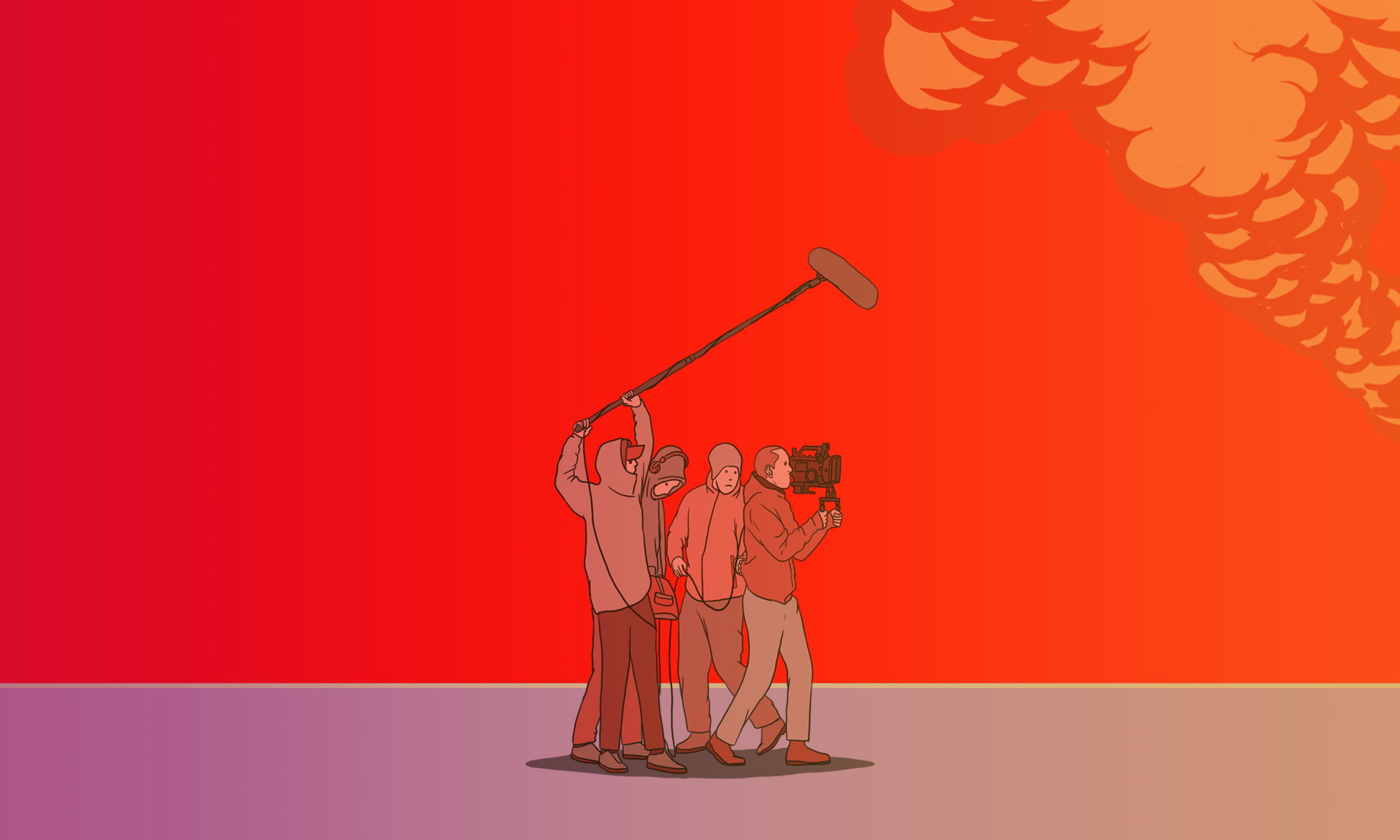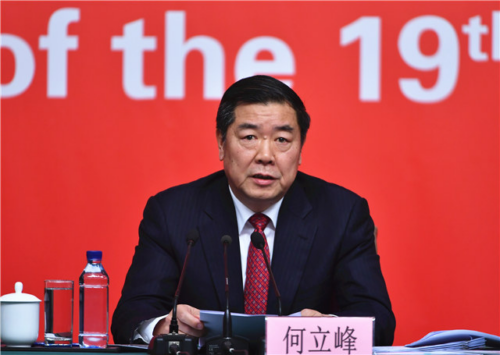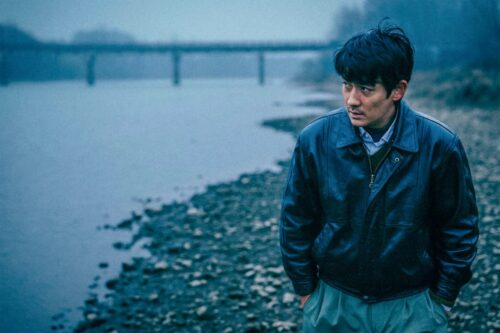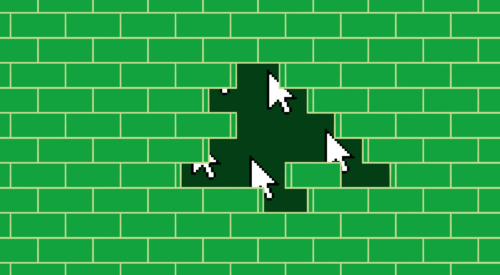Two Hong Kong protest documentaries applauded at South Korean film festival
The Hong Kong protest documentaries "Taking Back the Legislature" and "Inside the Red Brick Wall" played at this year’s Jeonju International Film Festival (JIFF) in South Korea, which concluded on May 8.

South Koreans, particularly those likely to be film festival programmers, have a long memory in regards to political agitation. It took several democratic uprisings to end the South Korean dictatorship, which was only toppled in 1987. Perhaps that’s why the audiences at this year’s Jeonju International Film Festival (JIFF), which concluded on May 8, took such a liking to two Hong Kong protest documentaries, Taking Back the Legislature and Inside the Red Brick Wall.
Hong Kong was far from the only revolutionary topic in the program: eight Korean film festival directors issued a joint declaration at the beginning of JIFF to condemn the Myanmar military coup. But considering how visible the Hong Kong protests were in the latter half of 2019, it’s no surprise that these pair of movies attracted large audiences. The protesters endeared themselves to South Korea writ large by drawing flattering comparisons between their struggle and that which South Korea endured in its march to democracy. South Korean protest music at Hong Kong democratization efforts is but one prominent example of a subject that has been very underreported in English. In local South Korean news, support for the Hong Kong protests was nearly universal. Liberals were emboldened by Hong Kong’s cries for freedom, while conservatives relished the opportunity to take a stance against China.
As we all know now, that struggle didn’t end the way the protesters had hoped, with COVID-19 restrictions ultimately aiding repression of the movement. But both screenings of the Hong Kong protest documentaries Taking Back the Legislature (shortlisted for the best documentary award at the 2020 Golden Horse Film Awards in Taiwan) and Inside the Red Brick Wall (named best film by the Hong Kong Film Critics Society), which premiered in the JIFF program as a double feature, sold out. The one I attended, in a rather non-ideal late afternoon time slot on the second Friday, May 7, even received applause from the audience, the only such response I personally witnessed during the festival for a screening without visiting filmmakers. (I attended around 20 such screenings.)
The filmmakers withheld their identities so as to avoid retaliation from the Chinese government. The unprofessional nature of their work is obvious, although I mean that in the nicest possible sense. One can hardly expect powerful production values from an on-the-ground protest where the documentation is being done by whosoever manages to show up with a decent camera. The protesters also obviously translated the dialogues themselves, rather than retaining the use of professionals. Awkward phrasing abounds. At one point I had to check the Korean subtitles to confirm that bombs were actually Molotov cocktails. The crude sincerity is admirable, though often revealing in non-intuitive ways.
Take, for example, the use of the word “leftard.” Such right-wing language seems rather at odds with discussion elsewhere of general strikes. Incidentally, it’s never clearly explained who the leftards are, nor do the filmmakers clarify whether the general strikes being referred to were the ones that happened in August 2019. Pre-familiarity with the subject matter is clearly assumed with the editing, to the point that the documentaries are nearly useless to viewers hoping to be educated. The filmmakers expect us to be impressed less by why they’re protesting and merely by the fact that they’re protesting at all. We see them invade the legislature and hold out as long as they can even as their fellows gain cold feet.
Such imagery appeals to South Koreans, who as far back as the Gwangju Uprising and as recently as the Candlelight Protests are used to the idea of active resistance, or at least the threat of it, being used to foment political change. Such imagery may be seen differently in the United States these days, with the 2021 storming of the United States Capitol now being widely associated with far-right extremists. (The Hong Kong protest movement was damaged in January when some expressed solidarity with the Capitol stormers in the U.S.)
Perhaps the great irony of the Hong Kong protest documentaries is that their style of commentary is out of fashion in American-styled circles. Citizenfour, a 2014 documentary about Edward Snowden that was lauded in its day, has since become a bit of a stylistic dinosaur. More recent politically themed documentaries tend to wear their politics on their sleeves, with I Am Greta and Her Socialist Smile being preeminent examples at JIFF. By never offering a real argument for the justness of their cause, the Hong Kong documentary filmmakers render their work only effective to those pre-inclined to agree with them.
As historical documents, these documentaries are exceptional, though they often create branding problems. The only real arc in either documentary is in the latter part of Inside the Red Brick Wall, where several high school principals gain access to the protest. They have arrived to negotiate the surrender of their students, saying they have reached an agreement with the police that surrendering the students will result in their identities verified and registered, but not otherwise prosecuted. The principals, who were pushed into this action by concerned parents, are also quite clear that they will only take students who wish to come with them and surrender of their own free will.
Many protesters treat the principals with bitter paranoia. While the concerns of the protesters are not unreasonable, subsequent arguments that huge numbers of protesters are teenagers beg a lot of unanswered questions about who exactly is participating and if they really understand what they’ve gotten into. Inside the Red Brick Wall shows us angry youth who might be mad as hell but don’t really have much of a plan for how they’re not going to take it anymore.
That was my interpretation, anyway, although I can’t imagine it was what the filmmakers intended. But then, that’s the appeal of Citizenfour-style documentary filmmaking. Just show events how they played out, and let the viewer come to their own conclusions. Though a reasonable gamble at the time the documentaries were made, it might not have worked out as well as the filmmakers hoped, given how little international interest there has been in the projects since their release. But who knows? The Hong Kong protest filmmakers were far from the only ones to have their release prospects damaged by COVID-19. Taking Back the Legislature and Inside the Red Brick Wall may yet get a second wind, buoyed by their strong performance at JIFF.







